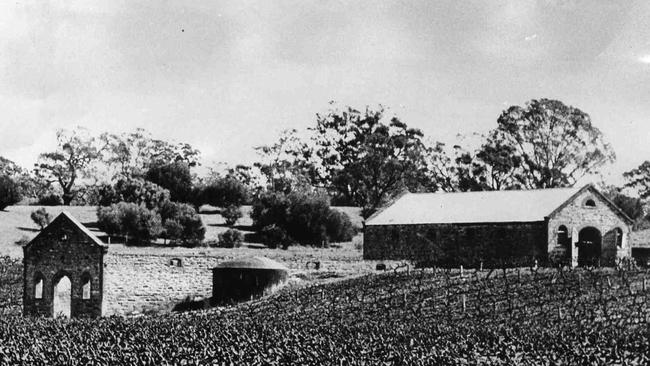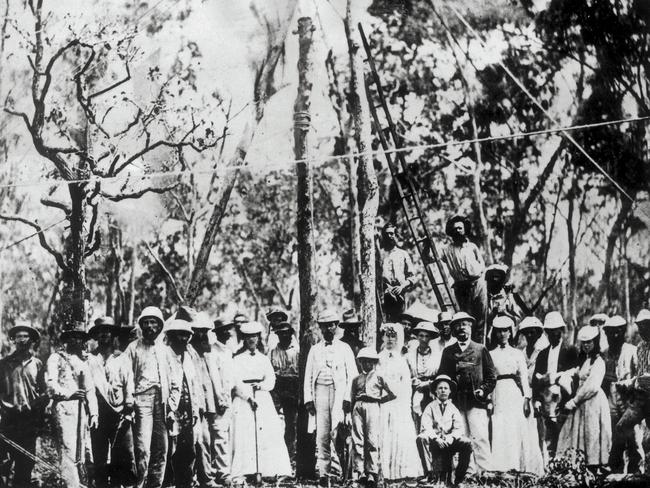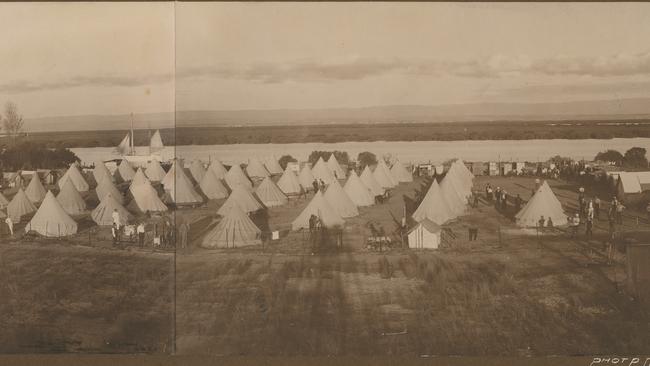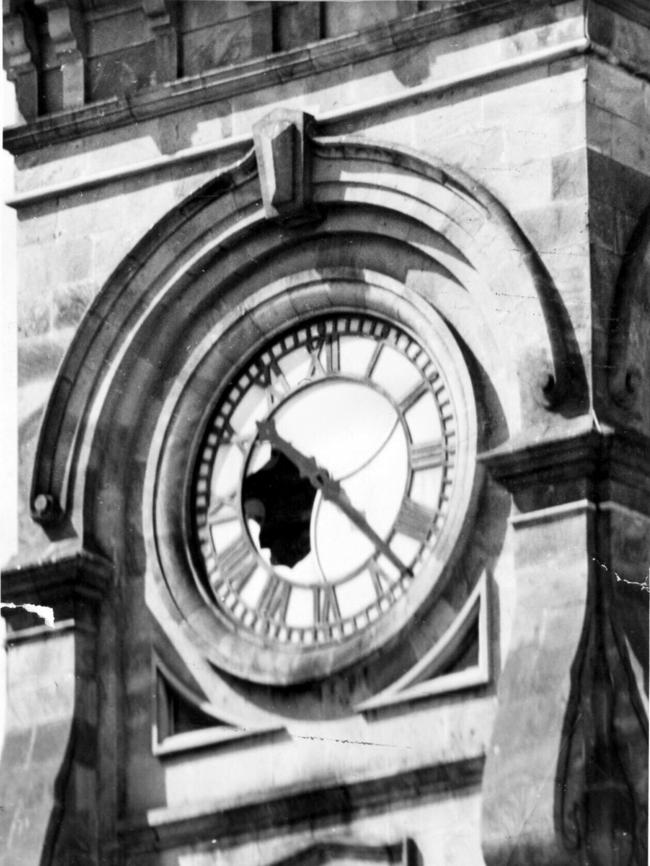The highs and lows of South Australia’s history
FROM a tiny colony to a vibrant state, official European settlement of South Australia began 180 years ago today. It hasn’t been all comfortable, plain sailing — here are some of the highs and lows of our history since that day.
SA News
Don't miss out on the headlines from SA News. Followed categories will be added to My News.
FROM a tiny colony to a vibrant state, official European settlement of South Australia began 180 years ago today. Here’s a look at some of the highs and lows of our history since that day.
----------------------------
49,000 years before present: In the northern Flinders Ranges at Warratyi indigenous people settled in the oldest known human site to date in SA.
1836: 28 December: Governor John Hindmarsh and settlers arrived aboard the Buffalo, and the province of South Australia was proclaimed. The Proclamation ceremony was the culmination of years of planning. American sealers had occupied Kangaroo Island in 1803 but it was not until 1831 that Collet Barker surveyed Gulf St Vincent, and climbed Mount Lofty. The plan for the colony was the brain child of Edward Gibbon Wakefield, and in 1833 the South Australian Association was formed in Britain to establish a colony. The next year the South Australia Colonisation Act passed in Britain to establish a free-settler colony.

1847: The first Barossa Valley winery was established at Jacob’s Creek. South Australia was expanding beyond Adelaide and in 1854 Port Augusta is surveyed, and Gambierton founded, later Mount Gambier. It was not until 1889 that lead smelting began at Port Pirie.
1856: Boyle Travers Finniss became the first Premier of SA, and the Constitution and Electoral Law Act gave male adults a vote for both houses of Parliament. It was the first colony in Australia to do so. The South Australian Institute was founded and became a precursor to the State Library, the State Museum and Art Gallery. The Botanic gardens were open the following year and the Adelaide zoo in 1883.
1862: John McDouall Stuart and party successfully crossed the continent, reaching the northern coast on July 24.
1865: South Australia’s Surveyor-General, George Woodroffe Goyder, surveyed the State’s north to define areas which received enough rain to support agriculture or livestock. This established ‘Goyder’s line’ — the areas to the north of the Line deemed to receive insufficient rain for farming. By 1865, SA farms half of the land under wheat in Australia.

1872: With the launch of the Overland Telegraph Line, Adelaide became the first Australian capital to be connected to London.
1874: The University of Adelaide Act established South Australia’s first university; teaching began in 1876.
1887: The first irrigation settlement in Australia was established at Renmark and the Adelaide to Melbourne railway was opened.
1895: SA was the first Australian colony to grant women the vote, and the first place in the world to allow women to stand for Parliament.
1901: SA became a state of Australia following Federation and transport is rapidly developing with the first licence to drive a motor vehicle in Australia issued in Adelaide in 1906 and electric trams began operation in 1909.
1914: SA handed over a disputed strip of border land 3.6km wide to Victoria in exchange for £215,000 and the Torrens Island Internment Camp for WWI was opened for men of German origin. In 1941 the similar “Loveday Internment Camps” near Barmera held Italian, German and Japanese men deemed to be a threat to Australian security while the nation was at war.


In social firsts in 1915 the first women police officers in the British Commonwealth were appointed. Four women Justices of the Peace were appointed, and were the first in Australia. This is followed in 1919 by the first elected woman politician in Australia, Brighton Councillor Susan Benny. In the same year the flu pandemic, which claimed 12,000 Australian lives, hits Adelaide. Adelaide was awarded official city status and “Mayor” became Lord Mayor.
1929: SA writer David Unaipon became the first published Australian Aboriginal author. The Port Augusta to Alice Springs railway was completed and Adelaide to Glenelg tramway completed. It is not until 2004 that the line continues to Darwin and the first passenger train The Ghan completes the completed Adelaide to Darwin railway. NT residents gathered to “moon” the train as it entered the city.
1931: The Holden’s Motor Body Builders was taken over by General Motors (Australia) and the SA population reached 577,079.
1933: John Martin’s started the Christmas Pageant tradition.

1936: SA Housing trust was set up, the first in Australia and the “new” SA Parliament building foundation stone was laid.
1945: Adelaide’s Lance Hill designed the Hills hoist, the first rotary clothes hoist to achieve national sales success. Howard Florey was awarded Nobel prize with A Fleming and E Chain, for discovery and development of penicillin.
1954: An earthquake caused extensive damage to the Adelaide region.

1960: Social reform gained pace beginning with the first Adelaide Festival of Arts. In 1965 Roma Mitchell became the first female judge in Australia (in 1991 she was appointed Governor of SA, the first woman appointed as a Governor in Australia). There were a number of firsts for the state in the 1960s and 1970s; in 1966 SA became the first state in Australia to prohibit racial discrimination and in 1975 to legalise homosexuality. In 1972 Pastor Douglas Nicholls became the first Aboriginal to be knighted and in 1976 the first Aboriginal Governor of any Australian State. In the same year ‘Rape within marriage’ was recognised as a criminal offence, the first ruling in the English-speaking world
1980: The first ‘Ash Wednesday’ bushfires hit the Mount Lofty Ranges, and in 1983 the major ‘Ash Wednesday’ bushfires in South Australia and Victoria caused the loss of 75 lives and destroy more than 2,500 buildings. The deaths eclipsed the 1939 ‘Black Friday’ bushfires from border of South Australia to Gippsland, Victoria, and NSW; when 71 people died.
1981: The Pitjantjatjara Land Rights Act 1981 (SA) recognised traditional rights of Pitjantjatjara and Yankunytjatjara people to their lands — the first act of its kind in Australia.
1985: The first Australian Formula One Grand Prix was held in Adelaide, won by Keke Rosberg of the Williams team.

1990: SA Senator Janine Haines, as Parliamentary Leader of the Australian Democrats, became the first woman to lead an Australian political party. Four years earlier, Labor’s Anne Levy was appointed President of the SA Legislative Council — the first woman to be a Presiding Officer of a House of Parliament in Australia.
1991: The government-owned State Bank collapsed causing a financial crisis.
1995: Beatification of Mother Mary MacKillop began a process which lead to her recognition as a Saint at a Canonisation ceremony in 2010 at St Peter’s Basilica, Rome.
2016: Premier Jay Weatherill announced treaty negotiations with Aboriginal nations, addressing the events of 28 December 1836 when the colony was proclaimed on Kaurna land without negotiation.
Sources: History SA, Family History SA, State Library of SA, http://www.samemory.sa.gov.au/webdata/resources/files/timeline/timeline.swf


